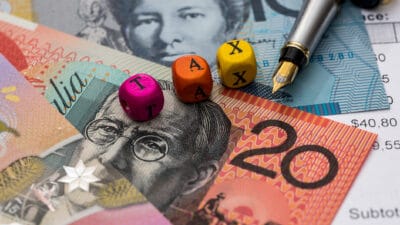Towards the middle of last year, my sister asked me a question.
She had a few quid that she wanted to invest for her kids' future. She reckoned I could help.
That makes three family members I'm now helping with their investing. It mightn't be 'career risk', exactly, but it certainly ups the stakes over Christmas dinner!
(I really should think about that — my income, my retirement and my family relationships all hinge on how well I do my job… no pressure, right?)
Anyway, she seemed to think I could help, and I was only too happy to lend a hand.
It wasn't 'sheep station' money, so I wanted to keep brokerage low.
They're all pre-teen, so they have time on their sides.
I didn't want her to have to trade in and out, so I was looking for investments that were buy-to-hold (I'd say 'buy and hold', but the narks like to characterise that as 'never selling under any circumstances', so I use the former description to make the intent clearer).
I wanted her to be diversified, by industry, geography and currency, so that no one variable would have an outsized impact on the money she had earmarked for the kids.
Volatility wasn't — in and of itself — a big deal. I've seen people end up with mediocre returns after paying up for 'volatility protection' — it's an expensive way to end up with less money.
So, with that in mind, I went looking. And I ended up with one growth machine, and one slow and steady investment.
Given the concentration of the Australian market, I looked overseas. To the companies and industries that are — quite literally — inventing tomorrow. The businesses that make devices, applications, and tools that didn't even exist a decade ago. And will likely be supplanted by this time next decade, too.
And the companies that are soaking up more and more of our time and, yes, money. Companies like Amazon, Alphabet (parent company of Google), Apple, Facebook, Netflix, and plenty besides. I use at least one of those companies every day. I dare say more of us will be using more of them more frequently over time, too. (I own shares in Amazon and Alphabet, for the record.)
Of course, splitting her cash across them would be both difficult (brokerage would be a killer), would require a heap of time to follow, and add paperwork and an international brokerage account — not ideal, given that we didn't want her to have to trade too often.
The answer was the Betashares NASDAQ 100 ETF (ASX: NDQ) — giving her a one-stop shop to the tech titans of today… and tomorrow. I say 'tomorrow' because the great thing about an index ETF is that if new, bigger, better companies turn up, they'll take their place in that very index. So it's self-balancing, in a sense.
Right, that's half of the job done. Now, what about Australia?
Well, as I said, I didn't want too much concentration. And I love the idea of super-low-cost index funds, but any Australian-focussed ETF would be somewhere between one-third and 40% financial services companies.
Think: Big 4 banks, Macquarie, the second-tier commercial banks, a handful of insurers and some fund managers. But mostly, the Big 4 banks.
I don't love that industry. And I especially don't love them making up close to $2 in every $5 when it comes to the ASX by market capitalisation.
So an ASX 200 or ASX 300 ETF was out.
And most Listed Investment Companies (LICs) were out, too. After all, they tend to have roughly representative weightings, meaning I'd still end up with a big chunk of the big banks. No, thank you.
My attention fell to another company, which is part listed investment company, part conglomerate: Washington H. Soul Pattinson (ASX: SOL). I've followed the company for years, and I own shares. I've met members of the Millner family, the head of which, Robert Millner, is the fourth generation to run the company. And I've met the company's CEO, Todd Barlow.
The Millners are reported to have most of their family wealth tied up in the company. They run it for the long term. And their track record is excellent. It's a combination of wholly-owned businesses, large controlling stakes in other companies, and a sizeable equity portfolio.
Like me, but with a few more zeroes (and a few more, again), the Millners have to face the family at Christmas time. Given the long-term success there, I dare say Robert is a popular man when the turkey is carved.
Soul Patts isn't an index-hugger. With investments in telecoms, coal, building materials, property, financial services and pharmaceuticals, it's broad and diversified, but can't be accused of blindly following the market.
So, 8 or 9 months ago, my sister put that cash to work.
About half in each.
One high growth excitement machine, and one steady-as-she-goes, won't-scare-the-horses, diversified play.
And the returns? So far, so good: 49.7% and 6.7%, as of lunchtime today.
Good huh? About what you'd expect, given the types of investments we're talking about?
Hang on a sec…
I forgot to mention… That almost-50% winner? That was Soul Patts.
It's the NASDAQ 100 that's delivered a very pedestrian (though still very welcome) near 7%.
No, that wasn't in the script. I don't know what odds I could have received on that pair. I was stunned when I saw the numbers today.
Growth-wise, Soul Patts — the staid century-plus-old investment conglomerate delivered gains of 8 times the NASDAQ over the past three-quarters of a year.
Feel free to go and check if you don't believe me. I'll wait…
Back? Good.
Of course, I didn't expect those sorts of returns, either in that proportion or that order. And sure as hell not in 9 months.
It could have been very different.
Who knows — the market might take that all back, and more, in the next 9 months. Or those investments could change places.
For the record, I do think the NASDAQ has brighter growth prospects over the next decade, but I'm cheering them both on, in the hope it's a close-run thing. I'd be more than happy for Soul Patts to prove me wrong, too.
I bet you weren't expecting that result, either. A coal, pharmaceutical wholesaling and property developing (among lots of others) conglomerate draught horse isn't supposed to beat the pedigree racehorse, after all.
It's a good reminder, especially in the wake of earnings season, of how fickle the market can be — especially over the short and medium term.
It's a reminder that, no matter how much you think you know, the market can prove you wrong.
It's a reminder of the importance of quality.
And yes, it's a reminder of the folly, to slightly echo my first point, of trying to time the market.
I'd be surprised — if also delighted — if Soul Patts gains another 50% by the end of the year. I'd be equally surprised if the NASDAQ 100 ETF has another 9 months of relatively pedestrian gains.
But either — or both — can still happen.
(I didn't even mention the big swings in the NASDAQ ETF over the past 4-6 months, as that index fell hard, then recovered).
For the record, both are still Buy recommendations at Motley Fool Share Advisor, one of the investment advisory services I run. I'd happily buy shares in both, today (I'd also be happy to talk to anyone who can transport me back through time so I can buy when my sister did!).
Just remember this little tale, next time someone tells you what's going to happen next. They don't know, and neither do you nor I.
Instead, put the odds in your favour, like I did for my sister, by thinking long term, looking for quality, and not obsessing over volatility.
Fool on!

Scott Phillips
Chief Investment Officer
Motley Fool Australia








